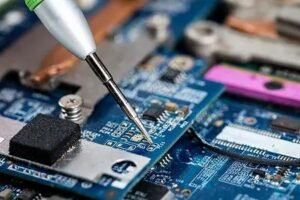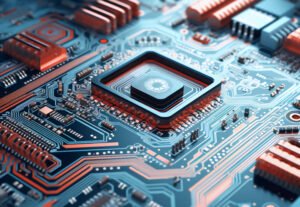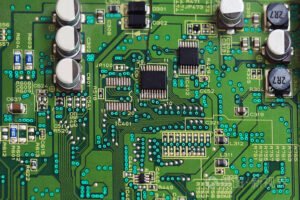Thermal Management in PCB Design: The Role of Heatsinks
PCB design is a multifaceted process that demands careful consideration of numerous potential challenges. Engineers must assess every aspect of the circuit board to ensure optimal performance, from physical constraints and electrical interactions between components to minimizing signal loss. One crucial factor in ensuring the longevity and reliability of a PCB is effective thermal management.
To manage heat effectively and prevent excessive buildup within the PCB, various cooling methods can be employed. Among these, the use of heatsinks stands out as a practical solution. This article will explore what heatsinks are, their distinct advantages and challenges, and how to choose the right heatsink for your PCB design.
Understanding Heatsinks in PCB Design: Function, Applications, and Considerations
Thermal management is a critical aspect of PCB design, ensuring the optimal performance and longevity of the board and its components. Among the various methods of heat dissipation, heatsinks are one of the most widely used solutions, especially for handling high-power devices like power transistors and switching components. In this article, we will explore the role of heatsinks in PCB designs, their advantages, challenges, and key considerations when selecting the appropriate heatsink for your board.
What Are Heatsinks in PCB Design?

A heatsink is a passive component made of thermally conductive materials, typically aluminum or copper, designed to dissipate heat from electronic components. It is attached to the PCB to absorb and dissipate heat generated by high-power elements like processors, power supplies, or other temperature-sensitive devices.
Heatsinks work based on the principle of thermal conduction. Heat generated by PCB components is transferred to the heatsink, which then spreads the heat across a large surface area and dissipates it into the surrounding air. Many heatsinks are designed with fins or pins (protruding perpendicular to the PCB surface) to increase surface area and facilitate better heat dissipation.
How Do Heatsinks Work?

- Heat Transfer from Components to Heatsink: As PCB components generate heat, it naturally transfers from the component’s hot surface to the heatsink, which is typically made of materials like aluminum or copper, both known for their excellent thermal conductivity.
- Heat Dispersion: Once the heat is absorbed by the heatsink, it spreads across the heatsink’s larger surface area. The heat then dissipates into the surrounding environment, often aided by the heatsink’s design, such as the addition of vertical fins to maximize airflow and cooling efficiency.
Applications of Heatsinks in PCB Design
Heatsinks are typically required in PCB designs involving high-power components that generate significant heat. The need for a heatsink can usually be identified early in the design process based on factors such as component types and their power consumption. Components that commonly require heatsinks include:
- Processors: PCBs containing processors such as CPUs, GPUs, and microprocessors often require heatsinks to maintain stable temperatures and ensure long-term reliability.
- Power Components: Power components such as power amplifiers, regulators, and ICs (Integrated Circuits) generate higher levels of heat, necessitating proper thermal management solutions like heatsinks.
- Component Density: High component density in a PCB can lead to increased heat generation. In these cases, heatsinks can help manage the extra heat produced and prevent overheating, which could lead to component failure.
Certain industries, such as military or high-performance computing applications, are more likely to incorporate heatsinks into their PCB designs, where heat management is critical for ensuring the reliability of long-term operations.
Advantages of Using Heatsinks in PCB Design
The use of heatsinks in PCB designs provides several significant advantages, including:
- Improved Thermal Management: The primary benefit of heatsinks is their ability to improve heat dissipation and cooling, ensuring that the PCB operates within safe thermal limits, reducing the risk of overheating.
- Extended Lifespan: Effective heat management using heatsinks helps to extend the operational life of PCB components. Proper thermal regulation prevents overheating, which can degrade components over time.
- Cost-Effectiveness: Heatsinks are relatively inexpensive components that provide an efficient and affordable solution for thermal management, making them a cost-effective option in PCB design.
- Lightweight Design: Made from materials like aluminum and copper, heatsinks are lightweight yet effective in managing heat, allowing for the thermal control needed without significantly increasing the overall weight of the PCB.
Challenges in Using Heatsinks for PCBs

While heatsinks are highly effective, integrating them into a PCB design can present several challenges:
- Mechanical Attachment: Heatsinks need to be securely attached to the PCB, which often requires mechanical fasteners or clips. Improper attachment can result in poor thermal contact or physical damage to the PCB if adjustments or modifications are needed later on.
- Non-Mechanical Connections: Adhesives or thermal pastes are sometimes used to attach heatsinks, but these non-mechanical solutions pose challenges during disassembly. The use of thermal adhesives can complicate maintenance or repairs, as removing the heatsink without damaging components is more difficult.
- Removability: One of the key considerations in using heatsinks is ensuring that they are removable for future PCB repairs or upgrades. This is especially challenging when non-mechanical attachment methods are employed, as they may cause damage when the heatsink needs to be detached.
Choosing the Right Heatsink for Your PCB
Selecting the appropriate heatsink for a PCB design involves evaluating several factors to ensure optimal thermal management without compromising other design parameters. Key considerations include:
- Thermal Requirements: Understanding the thermal design curve (TDP) of your PCB components is essential. The TDP specifies the heat output of the components and helps determine how much heat dissipation is necessary to maintain the proper operating temperature.
- Available Space: The available space on the PCB for a heatsink is a critical factor in selecting the right one. Heatsinks come in various sizes and designs, so understanding the physical space constraints of your PCB layout is vital for ensuring compatibility.
- Heatsink Design: The design of the heatsink, including the material, size, fin density, and spacing, should be selected based on the thermal management needs of your PCB. A heatsink with more fins or larger surface area may be required for higher heat-generating components.
- Mounting Methods: Finally, consider the method of attachment for the heatsink. Mechanical mounting options, such as screws or clips, may provide a more durable and secure connection. Non-mechanical options, such as thermal adhesives, offer easier assembly but can be more challenging during disassembly.
Conclusion
Heatsinks play a crucial role in managing thermal dissipation in PCB designs, particularly for high-power components. While they offer significant benefits in terms of thermal management, longevity, and cost-efficiency, their integration requires careful planning to address challenges such as mechanical attachment and removability. By considering the thermal and spatial requirements of your PCB, as well as the installation methods, you can select the most suitable heatsink for your design and ensure the long-term reliability and performance of your PCB assembly.




